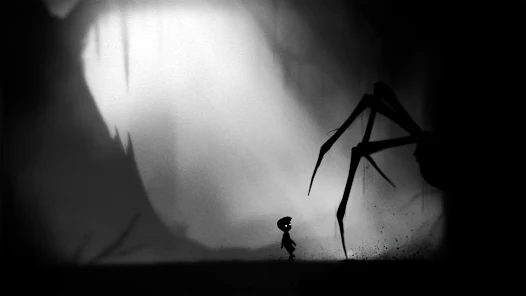
Exploring Limbo: A Minimalistic Gaming Masterpiece
Limbo, developed by Playdead Studios, is a critically acclaimed puzzle-platform game renowned for its unique monochromatic aesthetics and gripping atmosphere. Released in 2010, Limbo continues to captivate players with its enigmatic storyline and challenging gameplay. This article delves into the facets that make Limbo a masterpiece in the world of gaming.
Introduction to Limbo
Set in a stark black-and-white world, Limbo tells the story of a young boy navigating through a mysterious and eerie environment. The absence of dialogue or explicit narration leaves much to interpretation, enhancing its immersive quality. The game’s visual simplicity belies its emotional depth, pulling players into a hauntingly beautiful narrative about survival and search.
The lack of a defined plot allows players to immerse themselves fully in the experience. This approach ensures that each playthrough feels personal, as players interpret the events and surroundings through their own perspectives. From the desolate forests to the mechanical puzzles, every element is crafted to evoke emotion and curiosity.
The Unique Visual Style
Limbo’s art style is one of its defining features. The silhouetted characters and environments, combined with soft lighting and atmospheric effects, create a sense of foreboding and intrigue. This minimalist approach does not just serve as a stylistic choice but also aids in focusing players’ attention on the puzzles and hazards, ensuring an engaging experience.
What truly sets Limbo apart is its ability to convey so much through so little. The absence of vibrant colours or detailed textures shifts the focus entirely to the gameplay and atmosphere. The subtle use of sound further amplifies the haunting experience, with ambient noises like creaking wood or distant whispers adding layers of depth to the world.
Gameplay Mechanics
The core of Limbo’s gameplay lies in its intricate puzzles and precise platforming mechanics. Players guide the protagonist through various levels, overcoming deadly traps and solving environmental puzzles. The gameplay, though simple on the surface, demands sharp observational skills and quick reflexes, making each success deeply rewarding.
Limbo’s learning curve is gentle yet persistent, introducing new mechanics progressively. From balancing on precarious ledges to solving multi-layered puzzles, the game keeps players engaged without overwhelming them. The seamless integration of these challenges into the story ensures a fluid and immersive experience, keeping players on their toes at all times.
Physics-Based Challenges
Limbo leverages realistic physics to design its challenges. Whether it’s manipulating objects to cross a gap or timing jumps to avoid obstacles, the puzzles are cleverly constructed to test both the intellect and dexterity of players. This balance between challenge and fairness ensures that the game remains engaging throughout its runtime.
Every puzzle feels meticulously crafted to push the boundaries of creativity. The interactions are intuitive, yet they require players to think critically about their environment. Moments of tension arise as the protagonist narrowly escapes dangers, offering a sense of accomplishment with every success. It’s this blend of difficulty and satisfaction that keeps players hooked.

Impact on the Gaming Industry
Limbo’s success marked a significant moment for indie games, proving that small-scale productions could deliver experiences rivaling those of big-budget titles. Its critical and commercial acclaim paved the way for a new wave of minimalist and narrative-driven games. Titles like Inside and Little Nightmares owe a debt of gratitude to the path forged by Limbo.
The game’s influence extends beyond its immediate successors. Developers across the globe have cited Limbo as an inspiration for its bold artistic direction and compelling simplicity. It demonstrated that emotional storytelling and innovative gameplay do not require flashy graphics or complex systems, redefining what it means to create a meaningful gaming experience.
Award-Winning Legacy
Since its release, Limbo has won numerous awards for its design, art direction, and innovation. It remains a staple in discussions about the evolution of indie games and continues to inspire developers with its bold choices in storytelling and design.
Limbo’s legacy is not just about the accolades; it’s about the community it has fostered. Players and developers alike continue to celebrate its artistry and innovation, ensuring its place in gaming history. Its timeless appeal is a testament to the power of creativity and the impact of storytelling in video games.
